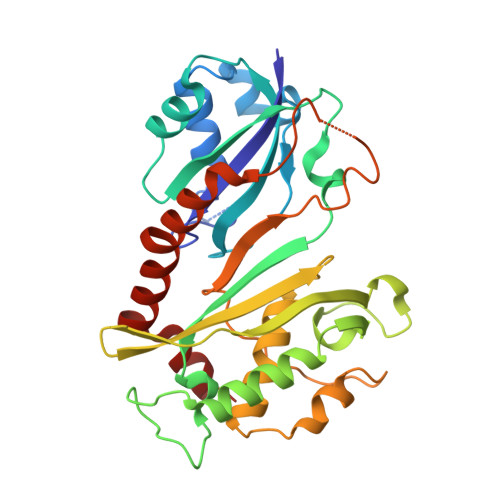Steroid Receptor RNA Activator (SRA) Modification by the Human Pseudouridine Synthase 1 (hPus1p): RNA Binding, Activity, and Atomic Model
Huet, T., Miannay, F.-A., Patton, J.R., Thore, S.(2014) PLoS One 9: e94610-e94610
- PubMed: 24722331
- DOI: https://doi.org/10.1371/journal.pone.0094610
- Primary Citation of Related Structures:
4NZ6, 4NZ7 - PubMed Abstract:
The most abundant of the modified nucleosides, and once considered as the "fifth" nucleotide in RNA, is pseudouridine, which results from the action of pseudouridine synthases. Recently, the mammalian pseudouridine synthase 1 (hPus1p) has been reported to modulate class I and class II nuclear receptor responses through its ability to modify the Steroid receptor RNA Activator (SRA). These findings highlight a new level of regulation in nuclear receptor (NR)-mediated transcriptional responses. We have characterised the RNA association and activity of the human Pus1p enzyme with its unusual SRA substrate. We validate that the minimal RNA fragment within SRA, named H7, is necessary for both the association and modification by hPus1p. Furthermore, we have determined the crystal structure of the catalytic domain of hPus1p at 2.0 Å resolution, alone and in a complex with several molecules present during crystallisation. This model shows an extended C-terminal helix specifically found in the eukaryotic protein, which may prevent the enzyme from forming a homodimer, both in the crystal lattice and in solution. Our biochemical and structural data help to understand the hPus1p active site architecture, and detail its particular requirements with regard to one of its nuclear substrates, the non-coding RNA SRA.
Organizational Affiliation:
Department of Molecular Biology, University of Geneva, Sciences III, Geneva, Switzerland.
















